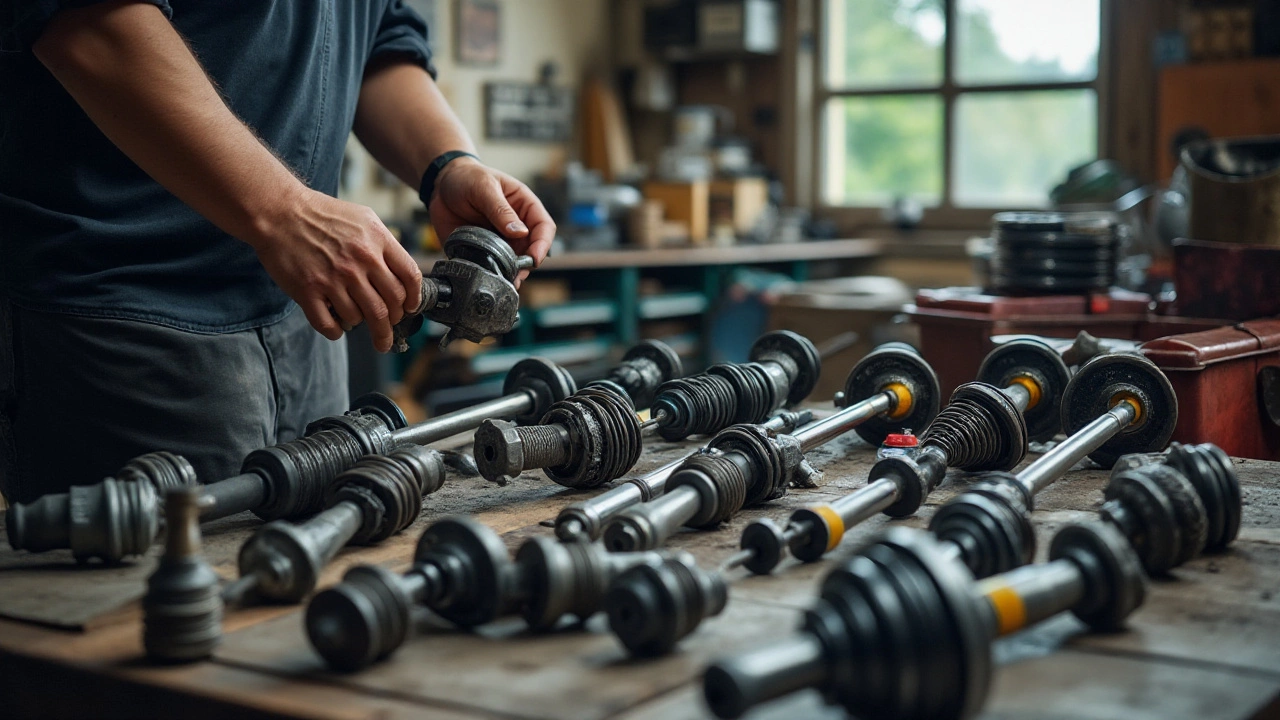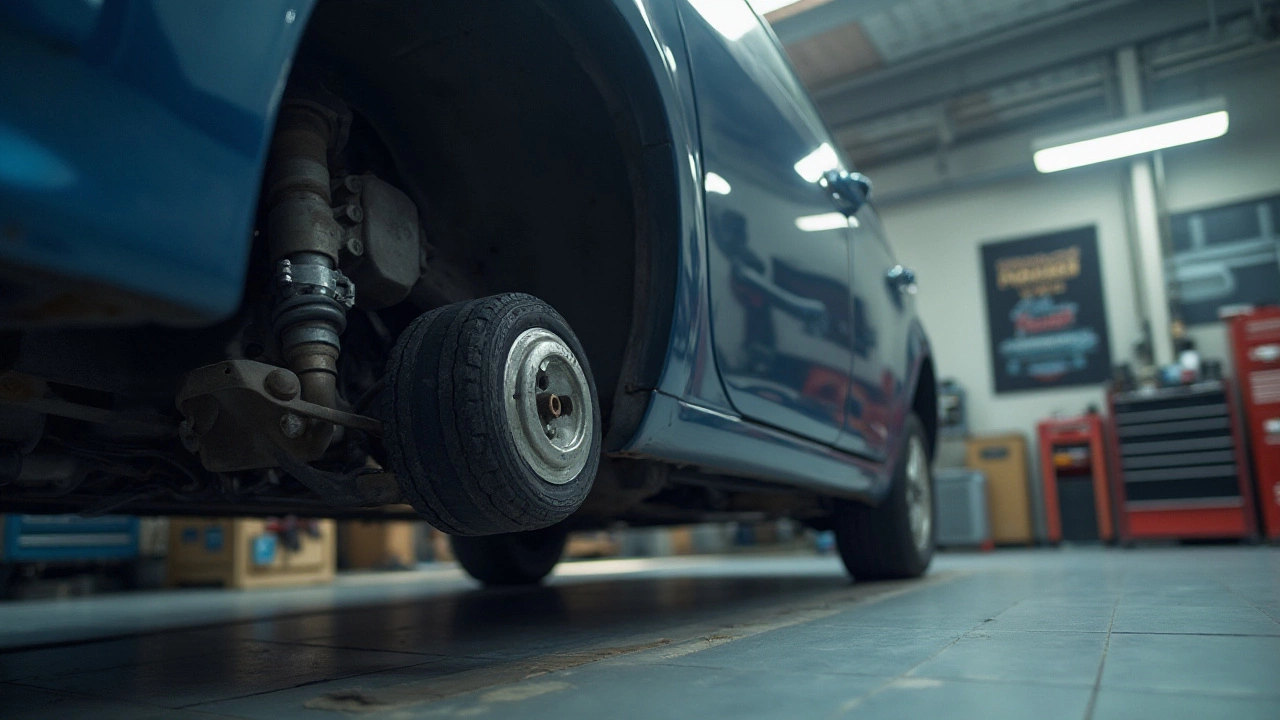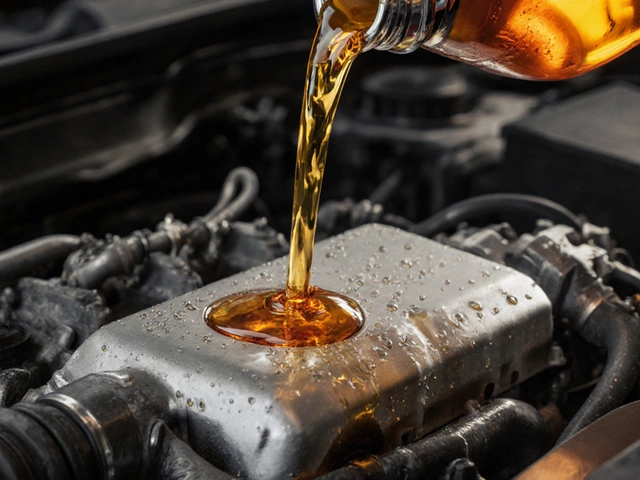Many drivers might suddenly find themselves puzzled when faced with the unexpected challenge of suspension repairs. It's not just about a bumpy ride; the suspension system plays a crucial role in the overall control and safety of your vehicle. From absorbing shocks and ensuring smooth navigation over various terrains to maintaining optimal steering accuracy, it is one complex assembly that requires attention.
The thought of repairing or replacing suspension components can raise many questions, particularly regarding the associated costs. While it can be expensive, understanding the intricacies involved can help you budget accordingly and possibly save money. This article aims to shed light on what influences these costs, common suspension problems, and some handy tips to keep those costs in check. Let's dive into the world of suspension systems!
- Understanding Suspension Systems
- Common Suspension Issues and Symptoms
- Cost Factors in Suspension Repairs
- Cost-Saving Tips and Maintenance Advice
Understanding Suspension Systems
Suspension systems are the unsung heroes of the automobile world, responsible for a lot more than just ensuring a smooth ride. At their core, these systems connect your vehicle to its wheels, allowing for optimal weight distribution, which in turn ensures stability and precision in handling. Interestingly, the advancements in suspension parts have dramatically contributed to vehicle safety by improving how a car responds during sudden maneuvers or on challenging road conditions.
A typical suspension system is made up of several key components: springs, shock absorbers or struts, control arms, and bushings, among others. Each plays an integral role; for instance, springs support the vehicle's weight and adjust for road irregularities. Meanwhile, shock absorbers, aptly named, dampen the kinetic energy generated as the vehicle moves over bumps. This kinetic energy management is crucial, as unchecked energy can not only make for a bumpy ride but also slowly damage the other parts of your vehicle. It's fascinating how the constant evolution of these components has directly influenced driving dynamics over the decades.
In modern cards, the suspension systems have been fine-tuned with technology. Consider active suspension systems, which adjust the firmness of shock absorbers in real-time using sensors that monitor road conditions and drive style. This results in an unparalleled ride quality regardless of terrain. As an auto enthusiast, I can't help but respect how brilliantly engineering transforms abstract concepts of motion into tangible, reliable technologies. Indeed, a quote attributed to Henry Ford once stated, "The car changes, but the road endures." This was before today's technological renaissance—truly, the roads and rides are co-evolving.
It's worth noting that suspension systems aren't one-size-fits-all. Different vehicles have distinct systems designed to align with their specific purposes. A sports car's suspension is structured for agility and precision, emphasizing cornering control; trucks and SUVs, on the other hand, might focus on heavier load-bearing capacities and off-road resilience. A quick comparison can highlight how these differences manifest in vehicle performance.
| Vehicle Type | Suspension Focus |
|---|---|
| Sports Car | Low center of gravity, minimal body roll |
| SUV | Load capacity, robust shock absorption |
| Truck | Heavy-duty, durability on rough terrains |
Among casual drivers and car buffs alike, there's a growing appreciation for the typically unseen world of suspension. Understanding these systems not only enriches driving experiences but helps when navigating the sometimes complex scenarios of suspension repair. After all, the more we know about what makes our vehicles tick, the better equipped we are to make smart, cost-effective decisions about maintenance and repairs.

Common Suspension Issues and Symptoms
When it comes to suspension repair, identifying the issues early on can often save a significant amount of money and prevent more severe damage. One of the most telling signs of suspension trouble is a bumpy ride. If you notice that your vehicle, which used to glide smoothly over the road, now makes you feel every little bump and jolt, it's a clear indication that something within the suspension system might be amiss. Shock absorbers or struts, which are designed to control the impact and bounce of your car, might be worn out. Excessive bouncing or swaying on turns and lane changes is another red flag that shouldn't be ignored.
Unusual noises such as clunking, knocking, or squeaking sounds when driving over bumps often indicate a failing suspension part. These sounds might come from worn or damaged components such as ball joints or bushings. Moreover, if you notice uneven tire wear, it can signal problems with the suspension system not holding the wheel alignment properly. Tires may wear unevenly if the weight is distributed incorrectly due to suspension misalignment, leading to a shorter tire lifespan and ineffective fuel consumption.
Another common indicator of suspension issues is your car pulling to one side while driving. This can mean that the suspension or steering systems are not functioning properly, potentially caused by uneven tire pressure, misalignment, or issues with the power steering. Vehicle pulling needs immediate attention as it directly affects driving safety. Dive a little deeper, and you might even notice fluid leakage, usually from shock absorbers, a classic sign of a suspension problem. Shock absorbers contain liquid or gas, and a leak could mean they are not functioning optimally.
"Drivers should be vigilant about changes in their vehicle's ride quality and handling. Regular inspections can help identify suspension issues early," says James Deakin, an automotive journalist known for his insights on vehicle maintenance.
Lastly, difficulty steering, especially at lower speeds, can suggest an issue within the suspension system. Stiff steering might be a result of power steering problems, the misalignment of parts, or component wear. When these signs are ignored, it might lead to challenging driving situations, particularly on slippery road conditions. Early detection and action are crucial in maintaining not only the functionality of vehicle maintenance but also ensuring your safety and that of other road users. Knowing these symptoms equips car owners with the necessary knowledge to act promptly, preventing minor issues from turning into costly repairs.

Cost Factors in Suspension Repairs
It is not uncommon for drivers to overlook their vehicle's suspension repair until it begins to seriously impact their driving experience. When that moment comes, understanding the cost implications of repairing your vehicle's suspension can save you from surprises. Various factors interact to influence the price you might end up paying, so it’s essential to be informed. One key factor is the type of vehicle you own. Luxury models or cars with specialized systems are often more costly to fix, as they require high-end parts and more intricate labor. Another factor is the condition and age of the vehicle; older cars may require replacement of parts that are no longer in production, leading to higher costs due to their scarcity.
The specific suspension parts that need replacement also play a critical role in determining expenses. Components like shocks, struts, or control arms might come with different price tags depending on brands, quality, and compatibility with your vehicle. On average, standard shocks or struts can range from $200 to $600 inclusive of labor, although specialized ones can go significantly higher. Labor costs, the next big chunk of any repair job, depends largely on the complexity of the job and the rate of the repair shop. Repairing a suspension system is typically labor-intensive, requiring the vehicle to be lifted, wheels removed, and various components inspected and replaced.
A mechanic once wisely said, "A good suspension is like a comfy pair of shoes; its real value is realized when it functions flawlessly." This highlights how people often underestimate the suspension system until it doesn’t perform optimally.
Geographic location also affects costs considerably. Prices for parts and labor are often higher in urban areas compared to rural zones due to the cost of living and demand differentials. Additionally, whether you choose to buy original manufacturer parts or aftermarket replacements can sway the budget either way. Original parts are designed to fit perfectly and could come with a warranty, but they're usually the pricier option. On the other hand, aftermarket parts could be more affordable, yet they may lack the precise fit or longevity of OEM parts. It’s important to research and decide based on what works best for your needs and financial considerations.
A practical piece of advice is to always get multiple quotes from different repair shops. Comparing offers not only gives you a bargaining edge but may also help uncover different diagnosis angles for your vehicle's issues. Consider asking if the proposed repairs are urgent or if they can be prioritized on a need basis to spread the cost over time. Though it's vital to fix critical damage immediately, understanding the timelines for less pressing issues can provide some financial breathing room. Staying proactive with regular vehicle inspections and timely maintenance can prevent small issues from escalating into costly repairs. An ounce of prevention is worth a pound of cure, as they say.

Cost-Saving Tips and Maintenance Advice
Managing the cost of suspension repairs can sometimes feel like driving through a winding road without a map. Yet, with a little foresight and some handy tricks, you can navigate this journey more smoothly and even keep your bank balance in check. One of the most effective ways to save money is prevention through regular maintenance. Checking and maintaining your vehicle's suspension parts can help identify issues before they become expensive problems. This includes making sure parts such as shock absorbers, springs, and struts are in top shape. Regular maintenance often leads to early detection of potential failures, which means less costly repairs in the long haul.
When it comes to actually implementing cost-saving strategies, never underestimate the power of comparison shopping. Different repair shops often offer varied pricing for labor and parts. Get multiple estimates before making a decision. While it might be tempting to go for the cheapest option, ensure the quality and reliability of services offered. Using high-quality parts, possibly with warranties, might involve upfront costs but can save a ton over time by extending the lifespan of your parts and reducing future repair frequencies. Additionally, consider whether a part can be repaired instead of replaced entirely.
DIY maintenance can be another helpful tool for managing vehicle maintenance costs. While not every suspension repair can be done at home, some basic tasks like replacing shock absorbers can be accomplished with the right tools and knowledge. There are countless online guides and videos available to guide you, and investing in a Haynes or Chilton manual for your specific vehicle can be a wise move. However, proceed with caution and understand your limits—complex repairs should definitely be left to professionals to ensure safety.
"Discounts and offers on labor costs can make a notable difference," highlights an expert at Auto Trade Magazine. "Many mechanics offer reduced rates during off-peak times, so scheduling repairs strategically can lead to savings."
Let's not forget the power of regular self-inspection. By routinely inspecting your car's suspension system, you can catch any unusual noises, wear, or damage early on. These subtle signs can escalate into something major if ignored. Don't miss out on rotating your tires regularly as well—uneven tire wear can be a telltale sign of suspension misalignment or failure and correcting tire alignment can prolong the life of both your tires and suspension.
If you truly want to be thorough, maintaining a detailed maintenance log can prove invaluable. This record should include all visits to the mechanic, services performed, and parts replaced. Not only will this help you keep track of your suspension repair expenses, but it could also aid in diagnosing future issues by showing patterns or recurring problems. Planning ahead for routine repairs, budgeting a small amount towards future expenses, and setting up a dedicated maintenance account can further alleviate the financial impact of unforeseen repairs.






